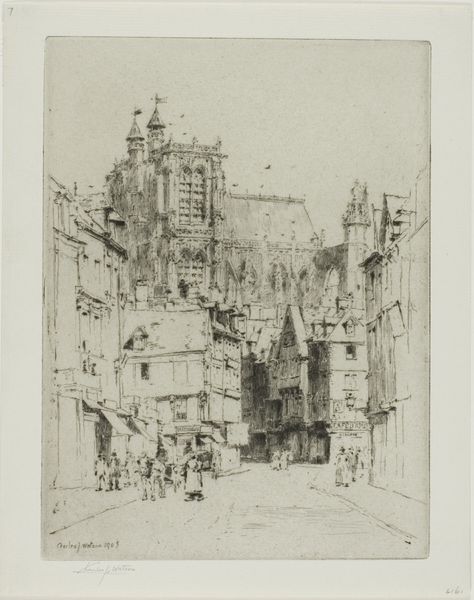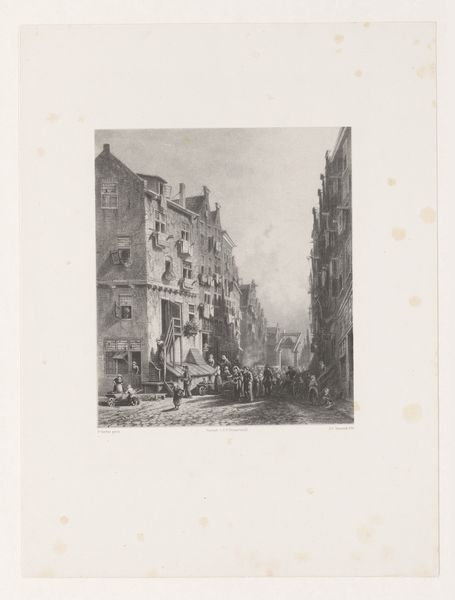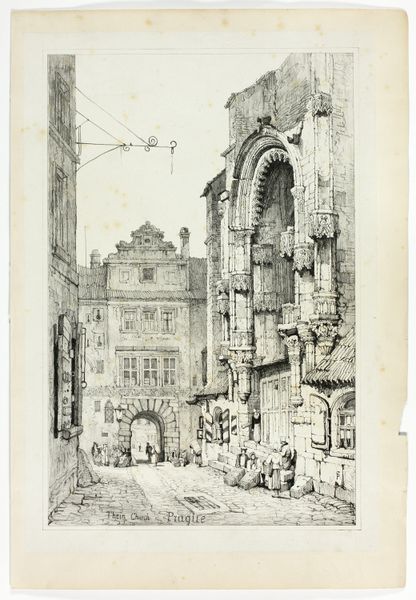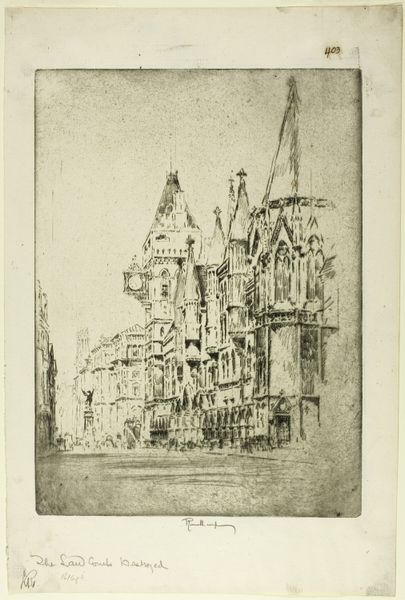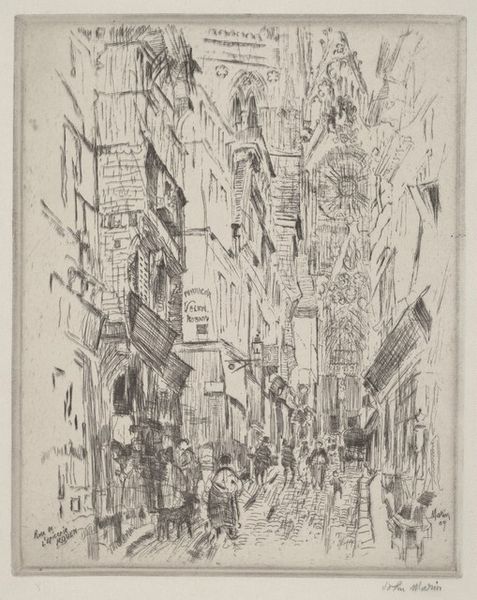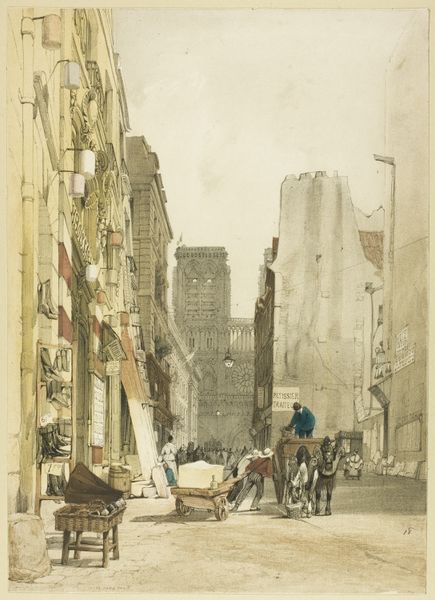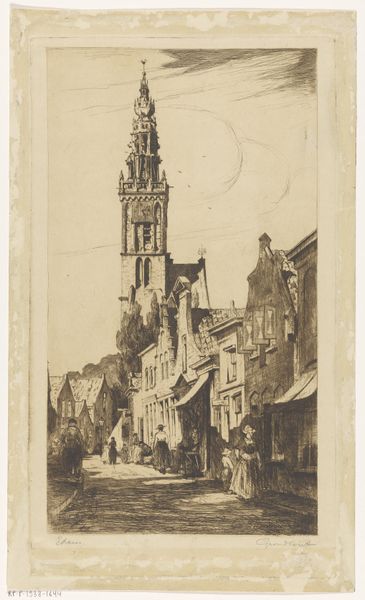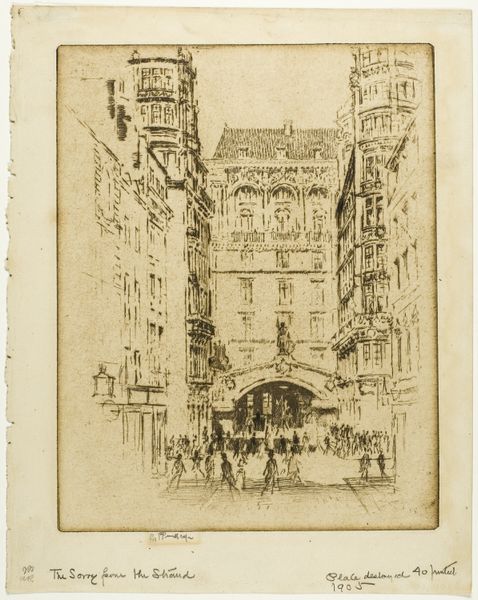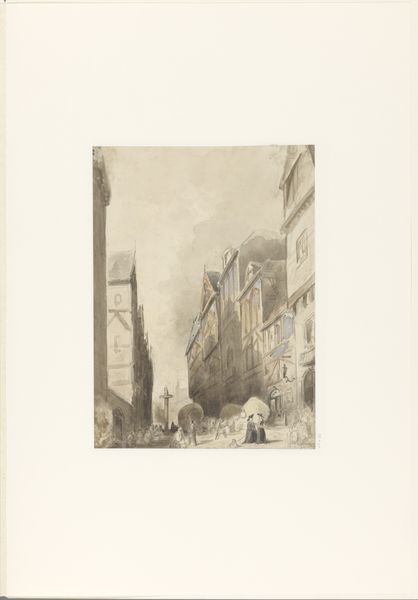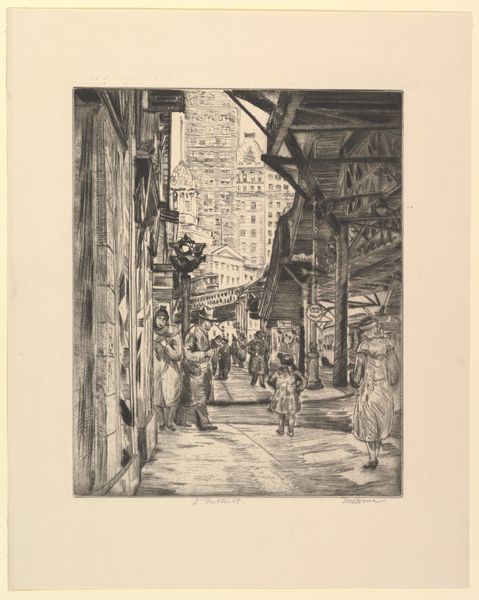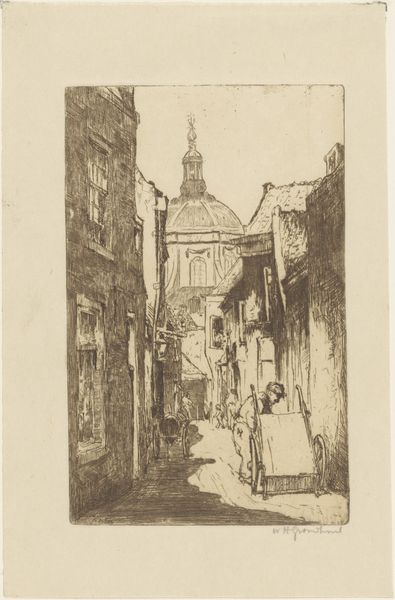
drawing, print, paper, ink
#
drawing
# print
#
landscape
#
paper
#
ink
#
romanticism
#
cityscape
Dimensions: height 309 mm, width 210 mm
Copyright: Rijks Museum: Open Domain
Curator: The linear perspective just draws you in. The monochrome treatment feels almost stark. Editor: Indeed. This is a print by Thomas Shotter Boys, entitled "Gezicht op de Rue des Prêtres-Saint-Germain-l'Auxerrois," dating from circa 1818-1825. Curator: The name itself hints at a significant aspect—the prominence of the Catholic church reflected in the figures moving through the street. Their very forms communicate a social hierarchy. Editor: Certainly. Shotter Boys, like many artists of the Romantic period, was fascinated by the intersection of sacred and secular spaces in urban life. The drawing reveals an evolving Parisian cityscape, poised on the cusp of modernization. The placement of cafes and shops right alongside the church presents complex negotiations of piety and commercialization. Curator: Absolutely. It also appears that most of the figures populating the print are women, be it shopping or dressed in habits. How might their position as either consumers, the pious, or even just inhabitants contextualize or frame the city differently to an assumed masculine experience and view? Editor: An astute observation. Consider also the artist's intent. Was this simply a depiction of daily life, or was there an underlying political commentary on the changing role of the Church and the emergent middle class? Was he, in representing women and the clergy as consumers, engaging with any burgeoning arguments and challenges about feminine and ecclesiastical influence in wider social shifts? Curator: That perspective, contextualizing it within contemporary sociopolitical discourse, opens new avenues of inquiry, like class disparities evidenced in the backdrop of religious architectural and commercial signifiers. The print seems to almost suggest it’s not just representing space, but representing privilege, or lack thereof. Editor: Precisely, and art like this allows us to examine how these histories and visual representations echo within present social struggles. Curator: It makes you wonder, doesn't it, what the present-day inhabitants of that street would make of this rendition, the social shifts the scene encapsulates? Editor: Indeed. By thinking about this print in relation to wider dialogues and considerations around socio-political challenges, it serves not just as a historical artefact, but a powerful and potentially activating agent.
Comments
No comments
Be the first to comment and join the conversation on the ultimate creative platform.
